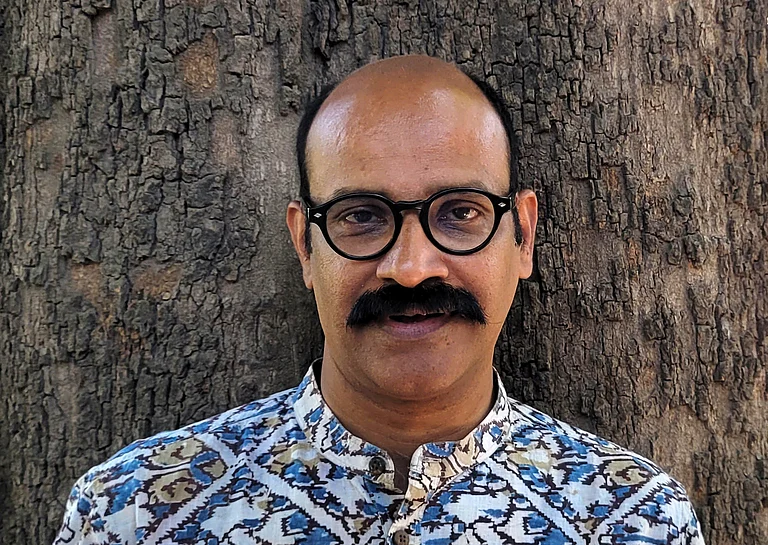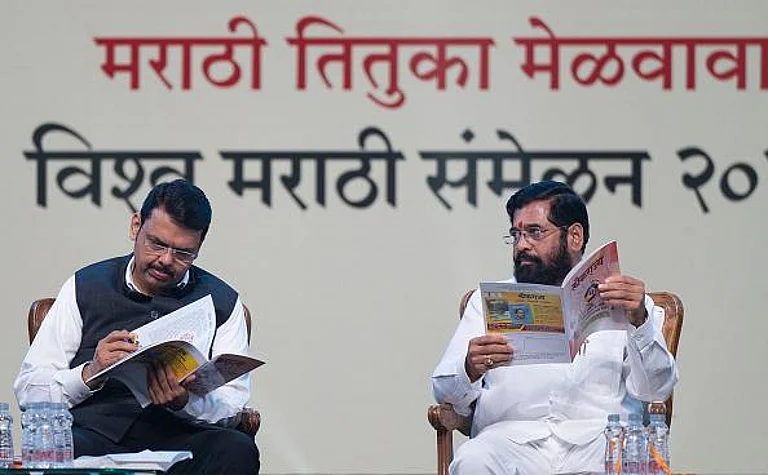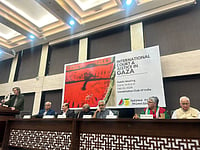The charred smoke of an earthen chulha was the first thing that caught his sight some eight or nine years ago when Amit Sihag, then an aspiring photographer from a rural town in Punjab, stepped out of the Mumbai Airport into the bustle of urbanity for the first time.
A few meters away, he saw a few autorickshaw drivers seated around the chulha, enjoying a quiet feast by themselves over some humble chappatis and curry. The familiar smell of the smoke brought with it a wave of memories from home. Drawn by it, Sihag invited himself to the party without any reserve. And he was joyously welcomed.
For a young Amit Sihag, with a camera around his neck, this was one of the first moments of feeling at home far away from home on the streets of an urban city. And today he continues to search for similar moments through the viewfinder to keep that feeling alive.
“It’s the simplicity of the rural lives and its minimalism that I yearn for wherever I go,” says Sihag.

Born and brought up in the small village of Taja Patti near Abohar (on the Punjab-Rajasthan border), Sihag was born into an agriculturalist family. At a very young age, he fell in love with photography when he got his hands on his first Point And Shoot camera in the fifth standard. He grew up documenting life in villages, around cattle, fields, farmers and pretty much everything comprising rural life. Eventually, looking through the viewfinder of the camera became a meditation for him.
Now, he attempts to create art that resonates with the nostalgia of his childhood.
In his latest series, shot in Punjab, Sihag shoots people wearing colourful masks engaged in daily chores in a rural setup --- two men seated on a bicycle, two men riding a bike, men sorting fodder, and men travelling in autorickshaws on the roads of a village. But all faceless.
“It’s an attempt to draw a second of your life to appreciate how rural people enjoy their lives. They are faceless because although shot in one state that is largely associated with my childhood, the series is an ode to the countryside, for people of rural India in recognition of their commitment, tenacity, and fortitude,” he says.

For most of his childhood, Sihag has grown up seeing men and women toiling in the fields --- from the sweltering summers to the harsh winters. Hardly there would be moments where he would see them pause, take a moment for themselves and indulge in a life of leisure and relaxation. And isn’t that a general picture that pops up when we imagine village life?
“Hence they remain faceless but the colours of the masks denote joy in their otherwise viewed mundane lives. It’s not a black-and-white story. They have so many stories, yet how often do they have the privilege to perhaps seek joy, happiness, and hope in an effort to break free from this monotonous pattern?” he adds.
Through the colourful snaps of rural lives, Sihag takes us on a brief journey beyond the “mundanity” of these lives. He takes us to “a place where dedication is revered and where people toil away must make a life—starting their day before the sun’s up and working 365 days of the calendar”.
Sihag portrays the optimism they find in this humdrum life by appreciating the small things and frequently singing a song to break up the monotony of their laborious work.
Back in 2001-2002, when Operation Parikrama was launched to force compellence on Pakistan to stop the proxy war in Kashmir and acts of terrorism in the hinterland of India, several settlements in the villages along the Punjab-Pakistan border had to be evicted. Helpless, the villagers migrated into other villages, away from the border, seeking shelter. Sihag was a young boy when he saw his family, like many others, offer a roof to the vulnerable. No questions asked, no brows frowned but doors were opened for ‘refugees’.

“I have grown up witnessing instances that are very distinct to the rural culture where one largely feels a sense of security in community building. Acceptance is not a difficult word here,” he says.
It’s the ubiquitous flavours of the simplicity and the openness of paddy fields that keep taking Sihag back to the creativity of earthy lives. “Urban cities put up walls and barricades that disappear as you walk into the rural world. There’s freedom there,” he states.
As Sihag goes out to the world to travel places and work for internationally acclaimed brands, it’s the harmony of the community and the blessedness of growing up in the countryside that draws him to return to the grassroots of his childhood. And through his latest photo series, he pauses for a moment to appreciate how laborious lives of villages are, which are nonetheless rewarding.


























